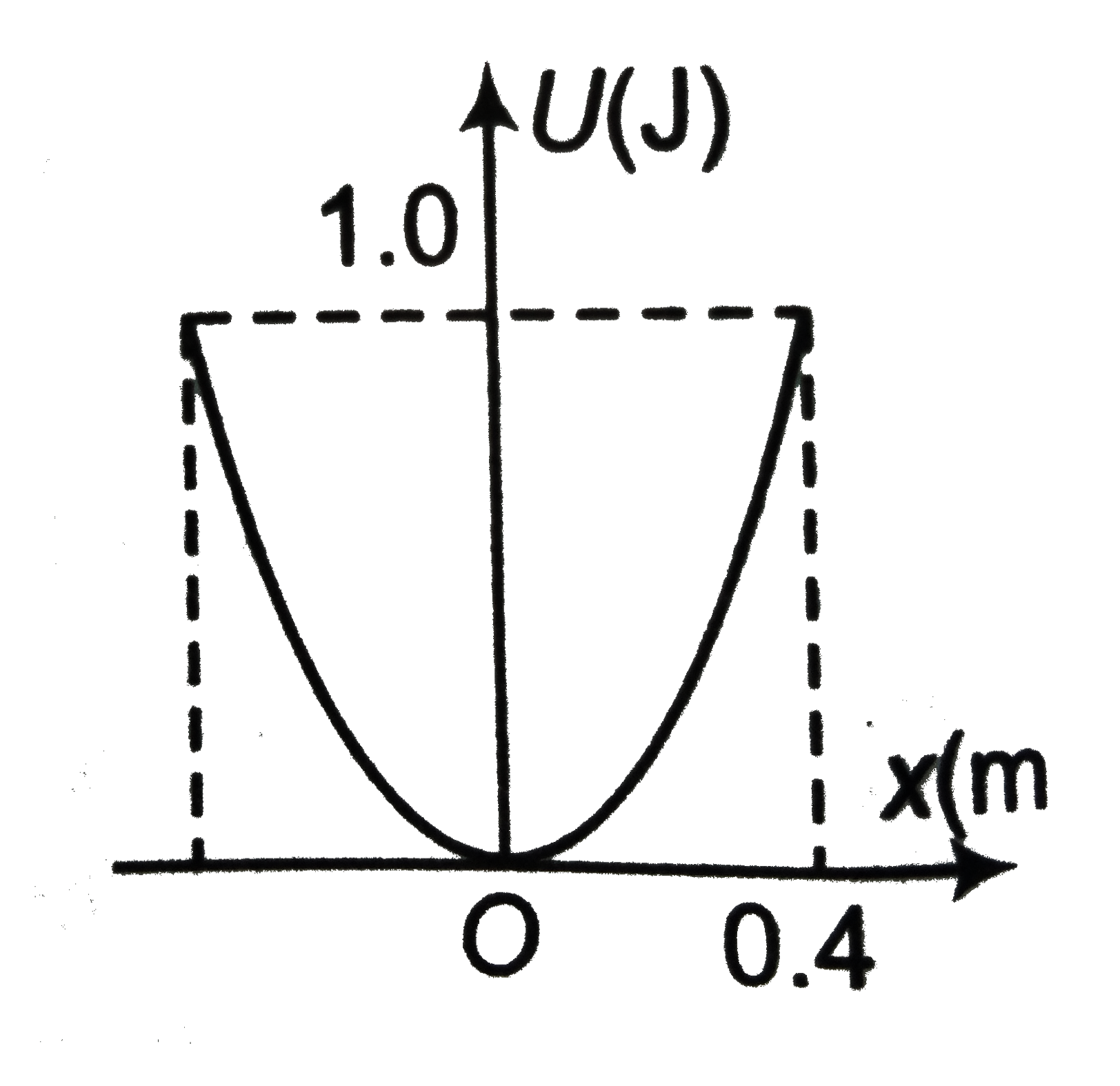The total mechanical energy of a spring mass system in simple harmonic motion is E=12mω2A2. Suppose the oscillating particle is replaced by another particle of double the mass while the amplitude A remains the same. The new mechanical energy will
become 2E
becoem E2
becoem √2E
remain E
The correct Answer is:D
To solve the problem, we need to analyze the total mechanical energy of a spring-mass system in simple harmonic motion and how it changes when the mass is altered while keeping the amplitude constant.
1. Understand the Formula for Total Mechanical Energy:
The total mechanical energy E of a spring-mass system in simple harmonic motion is given by the formula:
E=12mω2A2
where m is the mass, ω is the angular frequency, and A is the amplitude.
2. Identify the Changes in the System:
The problem states that the mass of the oscillating particle is doubled (from m to 2m), while the amplitude A remains the same.
3. Substitute the New Mass into the Energy Formula:
If we replace m with 2m, the new mechanical energy E′ can be expressed as:
E′=12(2m)ω′2A2
where ω′ is the new angular frequency after the mass change.
4. Consider the Conservation of Energy:
Since no external work is done on the system, the total mechanical energy must remain constant. Therefore, we can set the new energy equal to the original energy:
E′=E
5. Set Up the Equation:
Substitute the expressions for E′ and E:
12(2m)ω′2A2=12mω2A2
6. Simplify the Equation:
Cancel out the common terms 12A2:
2mω′2=mω2
7. Solve for the New Angular Frequency:
Divide both sides by m (assuming m≠0):
2ω′2=ω2
Now, divide both sides by 2:
ω′2=ω22
8. Take the Square Root:
Taking the square root gives:
ω′=ω√2
9. Conclusion about the Mechanical Energy:
Since the mechanical energy E′ remains equal to E despite the change in mass, we conclude:
E′=E
Final Answer:
The new mechanical energy will remain the same, E′=E.
---
The total mechanical energy E of a spring-mass system in simple harmonic motion is given by the formula:
E=12mω2A2
where m is the mass, ω is the angular frequency, and A is the amplitude.
The problem states that the mass of the oscillating particle is doubled (from m to 2m), while the amplitude A remains the same.
If we replace m with 2m, the new mechanical energy E′ can be expressed as:
E′=12(2m)ω′2A2
where ω′ is the new angular frequency after the mass change.
Since no external work is done on the system, the total mechanical energy must remain constant. Therefore, we can set the new energy equal to the original energy:
E′=E
Substitute the expressions for E′ and E:
12(2m)ω′2A2=12mω2A2
Cancel out the common terms 12A2:
2mω′2=mω2
Divide both sides by m (assuming m≠0):
2ω′2=ω2
Now, divide both sides by 2:
ω′2=ω22
Taking the square root gives:
ω′=ω√2
Since the mechanical energy E′ remains equal to E despite the change in mass, we conclude:
E′=E
The new mechanical energy will remain the same, E′=E.
Topper's Solved these Questions
- BOOK - HC VERMA ENGLISHCHAPTER - SIMPLE HARMONIC MOTIONEXERCISE - Objective-215videos
SIMPLE HARMONIC MOTION
- BOOK - HC VERMA ENGLISHCHAPTER - SIMPLE HARMONIC MOTIONEXERCISE - Exercises58videos
SIMPLE HARMONIC MOTION
- BOOK - HC VERMA ENGLISHCHAPTER - SIMPLE HARMONIC MOTIONEXERCISE - worked out Examples22videos
SIMPLE HARMONIC MOTION
- BOOK - HC VERMA ENGLISHCHAPTER - ROTATIONAL MECHANICSEXERCISE - Questions for short Answer21videos
ROTATIONAL MECHANICS
- BOOK - HC VERMA ENGLISHCHAPTER - SOME MECHANICAL PROPERTIES OF MATTEREXERCISE - Objective-27videos
SOME MECHANICAL PROPERTIES OF MATTER
Similar Questions
The energy of a system in simple harmonic motion is given by E=12mω2A2. Which of the following two statements is more appropriate? (A). the energy is increased because the amplitude is increased. (B) . The amplitude is increased because the energy is increased.
View SolutionA particle of mass 2kg moves in simple harmonic motion and its potential energy U varies with position x as shown. The period of oscillation of the particle is
 View Solution
View Solution
Knowledge Check
- Question 1 - Select One
The displacement of a particle executing simple harmonic motion is given by y=4sin(2t+ϕ). The period of oscillation is
A2/πBπ/2CπD2π - Question 2 - Select One
A particle executing simple harmonic motion with an amplitude 5 cm and a time period 0.2 s. the velocity and acceleration of the particle when the displacement is 5 cm is
A0.5πms−1,0ms−2B0.5ms−1,−5π2ms−2C0ms−1,−5π2ms−2D0.5πms−1,−0.5π2ms−2
A particle of mass 2kg moves in simple harmonic motion and its potential energy U varies with position x as shown. The period of oscillation of the particle is
 View Solution
View SolutionTwo simple harmonic motions y1=Asinωt and y2 = Acosωt are superimposed on a particle of mass m. The total mechanical energy of the particle is
View SolutionA particle executes simple harmonic motion with a period of 16s. At time t=2s, the particle crosses the mean position while at t=4s, its velocity is 4ms−1 amplitude of motion in metre is
View SolutionIf particle is excuting simple harmonic motion with time period T, then the time period of its total mechanical energy is :-
View SolutionQ. Statement I: The total energy of a particle performing simple harmonic motion could be negative. Statement II: Potential energy of a system could be magnetic.
View SolutionA particle is executing simple harmonic motion with an amplitude A and time period T. The displacement of the particles after 2T period from its initial position is
View Solution

